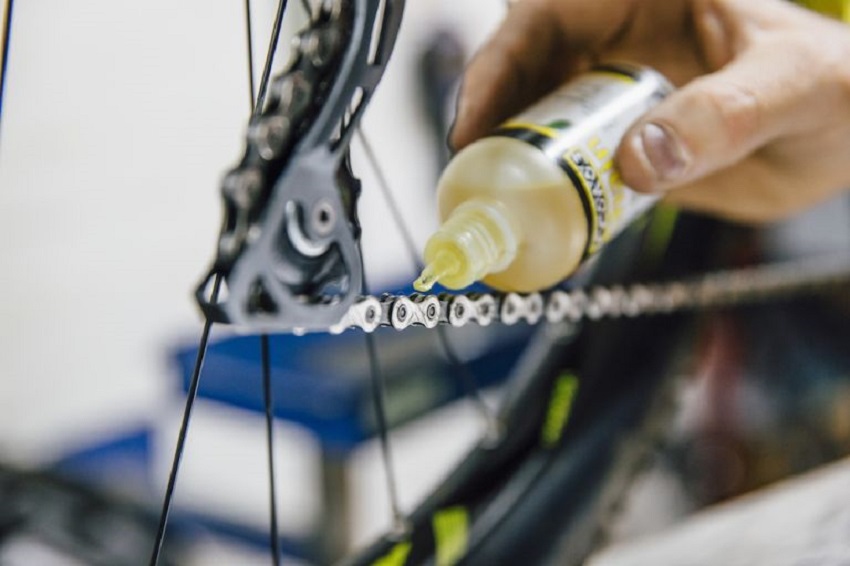Being a purely mechanical means, the components of a bicycle are subjected to friction, rolling and metal-on-metal clutches, which must be attenuated through the use of greases and lubricants. The main task of lubrication is precisely to reduce the frictional wear of the components, protect them from atmospheric oxidation, from washing out with water, and prevent excessive heating.
Lubrication, in the world of bicycles, can be divided into two main categories:
- Lubrication with grease;
- Lubrication with oils.
Knowing the characteristics, the types and the mechanical philosophy that underlies these is part of the ABC of a good mechanic and passionate cyclist. You can go through the Mongoose mountainbike.
What is it for?
Lubricating with grease is mainly used to protect bearings and balls subjected to rolling and friction, to protect them from water washout and dirt that cause premature wear.
Where it applies
Where there are bearings, then headsets, bottom brackets, wheel hubs. Furthermore, it is good practice to protect the threads with grease to avoid seizing.
Characteristics of bicycle greases
By lubricating grease, we mean a viscous substance (therefore not purely fluid), composed of a mineral or synthetic oil base, with specific additives for the applications for which the lubricant is intended. It follows from this that a “milieus” grease that is efficient in all conditions of use cannot exist. On the market, there are some that have a large range of applications, but if you want to keep your bike at its best, it is advisable to prefer special greases. The main characteristics of bicycle grease are:
- Good viscosity to resist centrifugal forces;
- Resistance to water washout and dirt;
- Ability to activate at low operating temperatures
Additive: Component added to the oil/soap base mixture to give the grease certain characteristics
Dropping point: Temperature beyond which a grease becomes more fluid and begins to drip, losing its lubricating characteristics. Once the dropping point is reached, the fat is compromised even if it is allowed to cool.
Viscosity: Characteristic of the molecules of a material to move away from each other. The higher the viscosity of grease, the less fluid it appears.
The ability of the grease or lubricant to activate its characteristics in certain situations or temperatures
What grease to use?
The typical lubricating grease that you can find just a few euros from the hardware store or even in non-specialized stores. It is an emulsion of mineral oil and soap, usually with added calcium, sodium, or barium.
Lithium grease
It is a lithium-based lubricating grease, usually white in color. It is widely used in the nautical industry as it is anti-seize and very resistant to the washing action of water. It can be used on bearings in headsets, bottom brackets, and hubs. It can also be used for the installation of threaded components thanks to its anti-seize characteristic.
Copper grease
Copper grease is an excellent anti-seize agent that is used in the mechanical industry for tightening bolts and coupled joints that work at high temperatures. The bicycle products called “anti-seize” (i.e., anti-seize) are nothing more than specific lubricants based on copper grease. It can be put on the bottom bracket caps, on the seat post, on the pedal pins, and on all components that are coupled by threading (spreading a light film on both the screw and the nut screw). In this way, micro-welding of the threads is avoided, which causes them to seize.
Teflon grease
Polytetrafluoroethylene, called Teflon or PTFE, is a synthetic polymer characterized by high resistance to chemical aggression and a very low coefficient of friction. Added as an additive to the lubricating grease, it makes it suitable for all those applications that require smoothness, elimination of friction, attenuation of noise. It is an excellent grease for components of a bicycle that work by friction, such as bearings. Not to be used on threaded parts, as it would increase the smoothness of the threads and therefore the possibility of loosening.
To be avoided
The one pictured is an old but common automotive type grease. Car bearings work at much higher temperatures and rpm than a bicycle. Automotive greases, therefore, activate at too high temperatures and would remain “inert” on a bicycle.
Even silicone grease, despite its high resistance to washout, is too liquid to be used on a bicycle (you risk having leaks). It is also not suitable for bearings.
How to apply the grease
There are various methods. The one-time mechanic took his index finger, dipped it in the jar of grease, and then passed it over the fillets. It is an immortal method, but sometimes it is difficult to reach the most uncomfortable points, such as the hub tracks and you risk greasing a much more abundant part than that affected by maintenance. You can use a brush dipped in grease or special guns with a pointed beak. In this case, even the most uncomfortable points are reached very easily. You do not get dirty. You apply the grease only where it is needed and waste is limited.
Lubrication with oily lubricants: What it is for
To decrease the friction and, therefore the wear of the components that work by rubbing or rotation. It also serves to create a protective barrier against the atmospheric agents to which all these components are exposed.
Where does it apply?
Chain, front and rear derailleur, cassette and sprocket set, fork legs, brake pins at the fulcrum. Important, never grease the chain!
Characteristics of bicycle lubricants
A bicycle lubricant must be free of hydrocarbons and solvents that are aggressive to metals, have excellent resistance to dirt and water, resist centrifugal force, and be fluid enough to be able to penetrate into very small areas (such as chain rollers)
What lubricant to use?
A neophyte or a superficial mechanic might think that on the chain, it is enough to spray any lubricant with characteristics that guarantee fluidity of movements and protection from rust.
Generic
I’m talking about the very famous WD-40 or Svitol, a panacea for all squeaks. In reality, more than a lubricant, the WD40 has a cleaning action (for this reason, it descales the seized threads). In fact, the lubricant inside the spray is a small part, which evaporates and does not protect the chain. I do not recommend it, since it is always better to rely on products designed and studied for use on a bicycle. Absolutely not to be used on the fork legs, as it is composed of a percentage of hydrocarbons that could cause the oil seals to dry out. Only specific products must be used on the suspension forks.
Dry (or dry) lubricant
Let’s make a distinction: the division between dry and wet lubricant does not necessarily mean that the former should be used when it is sunny and the latter when it rains. This is a conception error, as the terms “dry” and “wet” indicate the composition of the lubricant. The former is, in fact, drier while the latter is more viscous. The dry lubricant has Teflon additives, allows a good sliding of the chain and does not make the dust stick to the metal (which would have an effect similar to sandpaper on the components). It has a fairly limited duration and resistance to water washout is low. In fact, it tends to evaporate in a short time and for this reason, it should be added after a certain number of kilometers. It is an excellent solution for short rides, where there is not too much mud or humidity.
Wet lubricant
Designed to be vicious and thick, wet lubricant works in a totally opposite way to dry lubricant. In this case, the lubricant is viscous, almost sticky (a characteristic due to the silicone additives), to remain “clinging” to the chain and ensure that the water does not wash it away quickly. It tends to knead the chain, as it can attract dust or dirt, but once it gets into the pins, it stays inside for a long time. It is an excellent solution for long rides, where you don’t have time to stop and re-lubricate (which you should do if you are using a dry lubricant).
Suspension lubricant
The suspension stems (both front and rear) of the Mtb must be lubricated so that they slide better inside the chainstays. In this case, my advice is to always use specific lubricants for this type of work. In fact, the lubricant must give smoothness to the stem, keep it clean so that dirt does not stick (which would seriously wear the stems, even scratching them), do not dry out the oil seals, and do not contaminate the oil of the suspension hydraulics when the stem goes into compression in the sheath. Using an unsuitable lubricant would lead to one of the problems mentioned above, with what follows (suspensions cost a lot). Another mistake to avoid is to lubricate without first cleaning the stems with alcohol and a cotton cloth.
How to apply the lubricant
Easy: I turn the chain at full throttle, spray a liter of lubricant and start again with the chain dripping oil. Of course, you can do it if you want to harm your bike.
Let’s start by saying that it is better to use the lubricant in a bottle rather than the spray one, since it is easier to lubricate in the right places, not to dirty the rest of the bike with the jet, use the necessary amount. It is also good for the environment.
First, you have to clean the transmission thoroughly with a detergent. If very dirty, it should be disassembled and washed with white petroleum. Then the chain is slowly turned and lubricated by dropping a small amount on each roller of the chain (i.e., on the pin that holds the links together). If you consider that the chain has more than one hundred rolls, you understand why I said that it is a “pugnacious” operation. After lubricating the chain, downshift all the ratios of the rear cassette and the front crankset so that the lubricant has a way to penetrate inside the rollers. Then take a rag in your hand, wrap it around the chain and spin it. This is done to remove excess lubricant. In fact, it is a common belief that “the more lubricant the better,” but this is a misconception. Excess lubricant will clog the transmission,
When lubricating the transmission, protect the disc brake rotor with a cloth or plastic bag. If some lubricant ends up on the rotor, it could then contaminate the pads, canceling the braking effect and very dangerous during use. You may also like to read Bike brakes quick and easy tips



